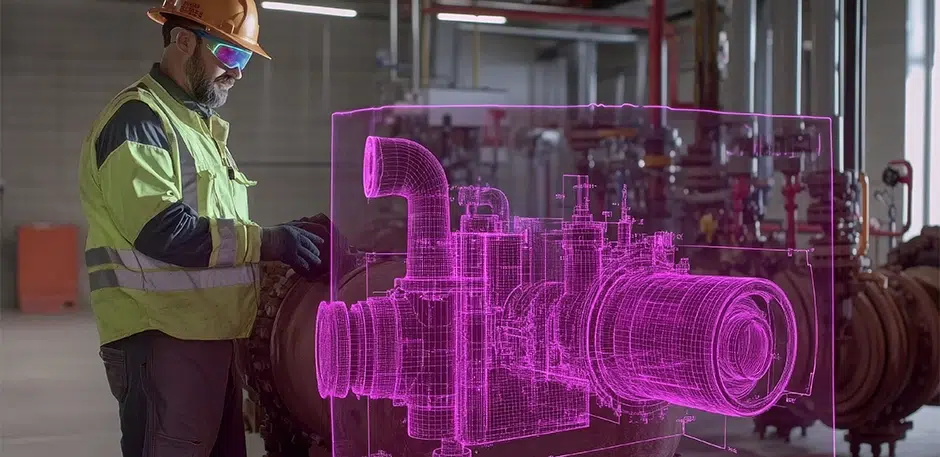
Legacy System Modernization with Product Engineering Services: A Strategic Roadmap for Industrial OEMs
Snippet:
Legacy industrial products are holding OEMs back—but few are addressing the hidden risks and missed opportunities. What if the key to unlocking recurring revenue, smarter operations, and competitive advantage isn’t a new product, but a strategic modernization journey? Discover how leading OEMs are transforming aging platforms into connected, intelligent solutions and why product engineering services are the secret accelerators behind this shift. From heavy equipment to automation, the results are striking—but only for those who act strategically. Don’t let legacy systems define your future—learn the roadmap top industrial OEMs are following.
By 2027, it is estimated that 70% of industrial OEM revenues will come from connected services rather than one-time equipment sales. The industrial equipment landscape is rapidly evolving from traditional machinery-focused offerings to intelligent, service-driven solutions. Customers now expect equipment to deliver predictive insights, integrate seamlessly into digital ecosystems, and enable recurring revenue models. This shift is redefining what it means to compete in the industrial sector.
Many OEMs, however, are constrained by legacy products. Outdated architectures, limited connectivity, and closed systems block access to high-value opportunities such as servitization, data monetization, and ecosystem integration. In this context, product engineering play a critical role in transforming aging platforms into connected, future-ready solutions, enabling OEMs to unlock new revenue streams and operational capabilities.
Modernization is no longer a technical upgrade—it is a strategic imperative. By modernizing their product portfolios, OEMs can provide future-proof offerings, extend product lifecycles, and reposition themselves as leaders in the digital industrial ecosystem. Beyond cost savings, modernization drives growth, resilience, and differentiation: growth through service-driven revenue models, resilience against market and regulatory disruptions, and differentiation through digitally enhanced value propositions. Strategic partnerships with product engineering service providers accelerate this journey, reducing risk and shortening time-to-market for modernized solutions.
Did you know:
The global legacy modernization market is projected to grow from USD 24.98 billion in 2025 to USD 56.87 billion by 2030, expanding at a 17.92% CAGR. This sharp rise underscores the urgency to resolve mounting technical debt while unlocking cloud-native agility and artificial-intelligence-driven efficiencies. (Source: Mordor intelligence)
Strategic Challenges of Legacy Products in Industrial Domains
For industrial OEMs, legacy products present not just operational inefficiencies but strategic roadblocks that can erode competitiveness in an increasingly digital-first market. The challenges extend across technology, market positioning, compliance, and ecosystem viability:
Technology Debt
Legacy equipment often relies on obsolete control systems, proprietary protocols, and non-scalable architectures that limit integration with modern platforms. Limited connectivity makes it difficult to enable IoT-driven insights, remote monitoring, or data monetization strategies. The cumulative effect is a rising “technology debt” that grows more expensive and complex to manage over time. Product engineering service providers help OEMs re-architect these systems for scalability, interoperability, and future-readiness.
Market Pressure
Industrial markets are no longer defined by incremental product improvements; they are shaped by digital-native OEMs and agile Tier-1 suppliers who are embedding software, analytics, and connectivity as standard. These players are setting new expectations around uptime, visibility, and service-led offerings. OEMs tied to legacy products face shrinking market share and commoditization risks if they cannot pivot quickly.
Compliance & Security
Global regulations are tightening around sustainability, cybersecurity, and interoperability standards (e.g., IEC 62443, ISO 14001). Legacy platforms typically lack the security hardening, energy efficiency, or data-sharing capabilities needed to comply. For OEMs, non-compliance not only exposes them to regulatory penalties but also disqualifies them from high-value, digitally integrated supply chains.
Talent & Ecosystem Risks
The ecosystem supporting legacy systems—whether skilled engineers, spare parts, or compatible tools—is steadily shrinking. As experienced talent retires and component suppliers discontinue older technologies, OEMs encounter rising costs and execution risks in maintaining legacy platforms. Here again, strategic partnerships in product engineering can mitigate risks by providing access to specialized skills, modern tools, and next-generation engineering capabilities.
Together, these challenges underscore that legacy products are not merely an engineering issue—they represent a strategic liability that impacts growth, profitability, and long-term resilience.
Understanding the Business Value of Modernization
Too often, modernization is framed as a cost of replacement, an unavoidable expense to keep products running. Forward-looking OEMs, however, recognize that the real conversation must shift toward strategic ROI—how modernization generates tangible business outcomes when paired with the right product engineering services.
Revenue Diversification
Modernized products enable as-a-service business models, predictive maintenance contracts, and subscription offerings. This transition allows OEMs to move beyond one-time sales and capture recurring, high-margin revenue streams—effectively turning equipment into a platform for continuous value creation.
Operational Agility
Through remote diagnostics, modular upgrades, and accelerated product iterations, OEMs gain the agility to reduce downtime, manage risks, and adapt quickly to shifting customer or regulatory demands. This flexibility becomes a critical differentiator in markets where responsiveness is as important as reliability.
Customer Stickiness
Modernization enhances the end-user experience with connected services, intuitive digital interfaces, and data-driven insights. These capabilities increase lifecycle value, strengthen loyalty, and make customers far less likely to migrate to competitors.
To sum it up, OEMs can future-proof their portfolios, unlock new growth opportunities, and establish themselves as leaders in the evolving industrial ecosystem.
Fact:
The number of connected vehicles in service is projected to reach 367 million globally by 2027, up from 192 million in 2023. This growth reflects the increasing demand for connected services and the need for OEMs to modernize legacy systems to remain competitive. (Source: Juniper research)
A Staged Transformation Journey Tailored for Industrial OEMs
Industrial OEMs can approach legacy product modernization as a staged, strategic journey, ensuring both risk mitigation and value creation at each step.
Strategic Portfolio Assessment
The first step is to take a comprehensive view of the product portfolio. Each product line should be evaluated for obsolescence risk, revenue contribution, and strategic relevance. This allows OEMs to identify high-priority modernization targets. By prioritizing based on market impact and lifecycle value, companies can focus resources on initiatives that deliver the greatest strategic return rather than spreading efforts thinly across all legacy systems.
Vision & Roadmap Alignment
Once priorities are clear, OEMs must define a modernization strategy aligned with broader corporate objectives, whether digital transformation, sustainability, or global market expansion. At this stage, decisions need to be made about the modernization approach—re-engineering, re-platforming, or re-architecting—depending on product complexity, risk profile, and expected ROI. A clearly articulated roadmap provides direction for both technical teams and leadership stakeholders.
Architecture & Design Reimagination
Modernization is an opportunity to reimagine product architecture for the digital era. Products should embed digital-native capabilities such as IoT, AI, edge computing, and cybersecurity, while being designed for interoperability, modularity, and scalability. Aligning with industry standards like OPC UA, ISA-95, and IEC 62443 ensures compatibility, regulatory compliance, and readiness for integration into customer ecosystems.
Execution Excellence:
The execution phase focuses on delivering modernization efficiently and reliably. OEMs should leverage agile engineering practices and rapid prototyping to accelerate iteration. Integrating product engineering services at this stage brings domain expertise, advanced testing capabilities, and accelerated validation, reducing risk and time-to-market. Ensuring compliance across multiple geographies and industries safeguards both quality and legal adherence.
Lifecycle & Service Transformation
Finally, modernization extends beyond product redesign to continuous lifecycle management. Deploying digital twins, predictive maintenance, and over-the-air (OTA) updates enables proactive monitoring, optimization, and enhanced customer service. OEMs can build data-driven service ecosystems, create long-term revenue streams while reinforce customer loyalty and operational efficiency.
Role of Product Engineering Services in Enabling Strategic Modernization
Modernizing legacy products is a complex, multi-dimensional challenge. For industrial OEMs, attempting to handle all aspects of modernization in-house can be costly, time-consuming, and risky. Scalability, speed to market, and access to specialized domain expertise are critical factors that often favor collaboration with external partners. This is where product engineering becomes a strategic enabler.
Core Contributions of Product Engineering Services:
- Legacy system audit & risk mapping: Assess existing products to identify technological debt, obsolescence risks, and opportunities for enhancement.
- Embedded system modernization & connectivity enablement: Upgrade firmware, control systems, and hardware interfaces to support IoT, edge computing, and secure connectivity.
- Cloud migration & edge analytics integration: Enable data-driven capabilities, predictive insights, and integration with enterprise or cloud-based analytics platforms.
- Accelerated compliance certification and validation: Ensure modernized products meet industry standards, regulatory requirements, and cybersecurity benchmarks efficiently.
By leveraging partnerships with industrial product engineering service companies , OEMs can focus on strategic priorities such as business model innovation, market expansion, and customer experience, while their engineering partners manage the technical complexity, mitigate risks, and accelerate modernization timelines. The result is a faster, lower-risk transformation that delivers future-ready, connected products capable of driving new revenue streams and sustaining competitive advantage.
2025 Market Report on Product Engineering Services:
Enterprises are increasingly turning to product engineering services to reduce development costs, accelerate time-to-market, support complex product innovation, and scale engineering capabilities with greater flexibility, technical expertise, and operational efficiency. (Source: Marketsandmarkets)
Strategic Use Cases & Industry Proof Points
The value of legacy product modernization is best understood through industry-specific examples. Across sectors, OEMs are leveraging modernization not just to extend the life of existing assets, but to unlock new revenue models, strengthen compliance, and secure long-term competitiveness.
Heavy Equipment OEMs
In construction, mining, and agriculture, OEMs are extending product lifecycles by embedding telematics, IoT connectivity, and predictive maintenance into legacy fleets. This shift allows them to move from one-time machine sales to service-based revenues, such as uptime guarantees or pay-per-use contracts. The result: higher customer loyalty and recurring revenue streams.
Energy & Utilities Equipment Manufacturers
As sustainability regulations tighten and the energy sector transitions to low-carbon operations, OEMs in this domain are modernizing legacy turbines, transformers, and distribution systems. By upgrading control systems and embedding real-time monitoring, they not only meet compliance mandates but also improve efficiency and reduce emissions—positioning themselves as critical partners in the global energy transition.
Automation OEMs
In manufacturing and process industries, automation equipment providers are re-architecting legacy systems for Industry 4.0 readiness. By integrating industrial IoT, cybersecurity frameworks, and modular software platforms, they enable customers to seamlessly connect operations, reduce downtime, and scale production. This modernization ensures OEMs remain central to digital factory ecosystems
Outcomes Across Sectors
Across these domains, modernization consistently delivers measurable impact: revenue uplift through service-driven models, reduced downtime via predictive insights, and higher customer retention driven by enhanced user experience and lifecycle value. OEMs that strategically embrace modernization are not just preserving relevance—they are shaping the next wave of industrial innovation.
Strategic Partnerships: Catalysts for Legacy Product Modernization
In the rapidly evolving industrial landscape, OEMs face mounting pressure to modernize legacy products to remain competitive. Attempting to handle this transformation solely in-house can strain resources and extend timelines. Strategic partnerships with industrial product engineering service providing companies offer a solution, providing specialized expertise and accelerating the modernization process. These collaborations enable OEMs to leverage advanced technologies and methodologies, ensuring a smoother transition to next-generation solutions.
For many OEMs, the most effective path forward lies in partnering with trusted outsourced product engineering services providers. By engaging with offshore product engineering services, manufacturers gain access to global talent pools, specialized domain knowledge, and cost efficiencies that are difficult to build in-house. Leading offshore product engineering companies bring proven frameworks, advanced testing capabilities, and regulatory expertise, helping OEMs accelerate modernization while focusing internal resources on business model innovation and market growth.
Utthunga: Empowering Transformation through Expertise
Utthunga stands out as a trusted partner in this journey, offering end-to-end product engineering services tailored for industrial OEMs. With over 17 years of experience and a team of 1,200+ multidisciplinary engineers, Utthunga specializes in embedded systems, cloud platforms, software development, and industrial protocol integration. Our comprehensive suite of services includes hardware and firmware development, application modernization, AI/ML integration, and compliance certification. By partnering with Utthunga, OEMs can access a wealth of expertise and resources, ensuring a swift and efficient modernization process that aligns with industry standards and future demands.





